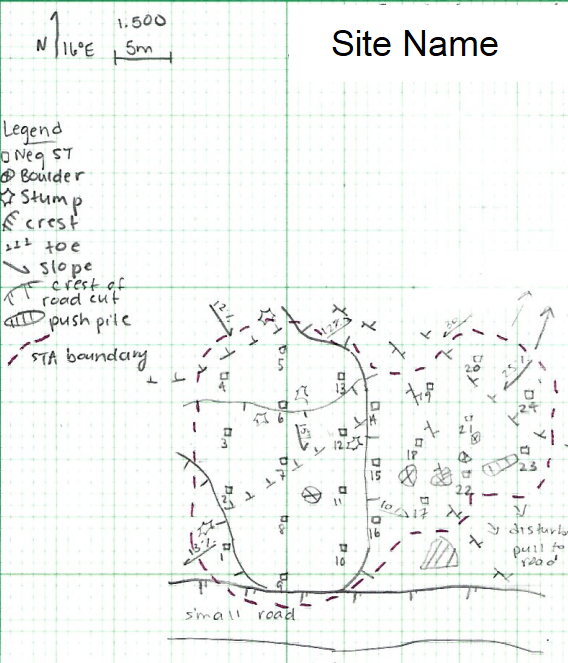An archaeologist working in cultural resource management in British Columbia has to wear a lot of hats (and no, I’m not referring to the stereotypical Indiana Jones hat). It can be exciting to learn many skills, and it allows for considerable variety in day-to-day tasks.
Some of the hats we wear (and we don’t proclaim excellence or expertise in these fields):
The hat of a labourer. In order to find out what is under the ground, archaeologists must dig shovel tests, or excavate evaluative units. Shovel tests are less precise, and often measure 35 cm by 35 cm to depths of between 50 cm to 70 cm, which can be a laborious task. The soil removed must also be screened to find artifacts. Evaluative units may be excavated slowly with a trowel, centimeter by centimeter, or a bit faster while shovel shaving, 5 cm to 10 cm at a time, which combines labour and precision.
The hat of a geologist. Archaeologists have to describe the stratigraphy in subsurface tests and evaluative units to try and determine what geological layers are present. This can tell an archaeologist what type of soil artifacts come from, and where to possibly expect them in the surrounding area. Layers of soils and rocks may give a timeframe of the when the layer was created, such as glacial till from the glaciers melting or a layer of volcanic ash from a well-known volcanic eruption (see photo 1).
The hat of a cartographer. An archaeologist may need to read a map to find out where they will be working. Although GPS units and other digital navigation alternatives make locating work areas and previously recorded sites easy, it is still important for an archaeologist to know how to read a physical map. This can help identify areas on the landscape with a higher probability for archaeological sites, such as locations near water sources. Archaeologists must also draw maps while in the field, of places where they have completed shovel testing, as well as site maps, when archaeological material is encountered. They use a compass and measuring chain to illustrate a scaled down map, which includes shovel tests, evaluative units, trees, boulders, landform features, water sources, and a number of other helpful identifiers (see photo 2). The maps must also be legible for other archaeologists to read and decipher.
The hat of a leader. An archaeology crew can include anywhere from a couple to a dozen or more individuals. The field director or field supervisor is in charge of the safety and coordination of the crew. They must plan routes to and from the site, communicate with project managers or clients, ensure a safe work environment for all crew members, and track productivity to stay on target with timelines. They must also listen to input from the rest of the crew, and uphold the standards expected of professional archaeologists in BC.
There are many more hats an archaeologist can wear in the span of their career, and each individual has their own assortment of skills. Cultural resource management can allow for changing work areas, a variety of tasks, new crew members, and never-ending learning experiences. People are always discovering new things, and our understanding of history is likely to continue to evolve. That takes many hats, and I’m always looking forward to finding out which one I will wear next!

